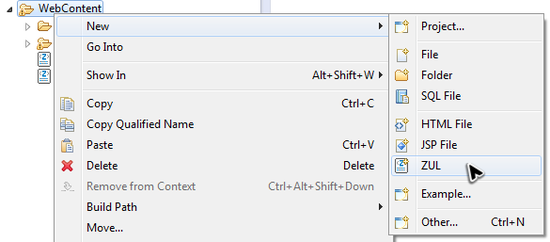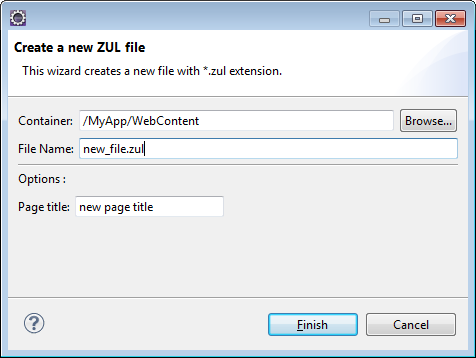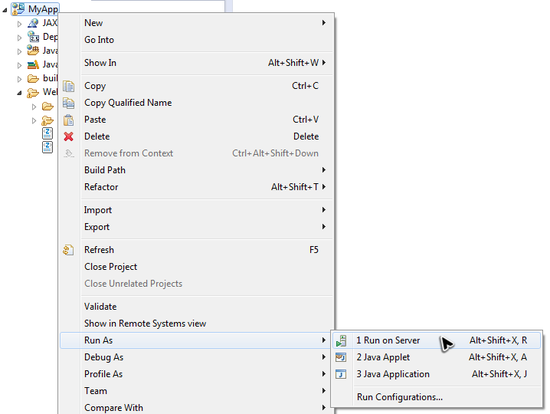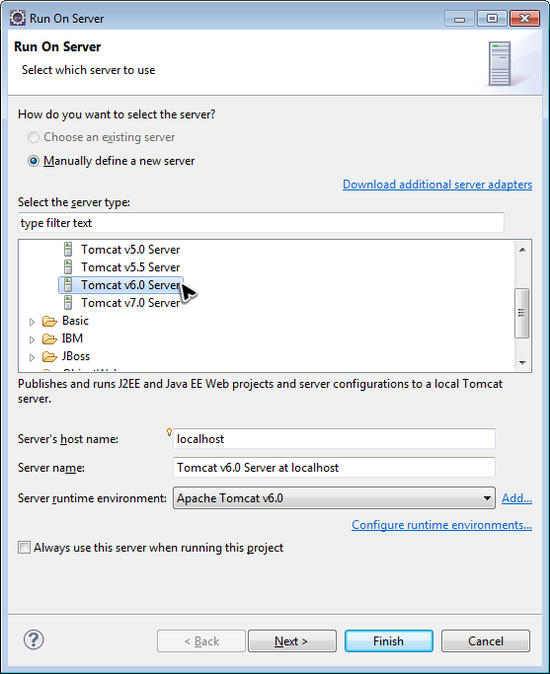Create and Run Your First ZK Application with Eclipse and ZK Studio
ZK Studio is an Eclipse plugin to simplify the development of ZK applications with Eclipse.
If you prefer to install it manually or use with other IDE, please refer to Create and Run Your First ZK Application Manually.
Prepare Eclipse
You can follow ZK Studio Installation Guide to install ZK Studio. There are prerequisites you have to set up before installing ZK Studio:
Java SE Development Kit (JDK)
Java SE Development Kit version 1.6 or later is required in order to run Eclipse with ZK Studio, you can download them from Oracle official website.
Eclipse IDE for Java EE Developers
ZK Studio is an Eclipse Plug-in so you must install Eclipse in advance.
- Visit Eclipse download page and download Eclipse IDE for Java EE Developers. Veresions 3.7 (Indigo) and 4.2(Juno) and later versions are currently supported.
- Uncompress it to a proper directory
- Then, Eclipse is ready to start for use.
- You can double-click eclipse.exe to start Eclipse under Windows.
You can refer to WTP Tutorials – Building and Running a Web Application for a tutorial.
Installing ZK Studio
Please follow the installation guide to install ZK Studio.
Application Servers
Before developing web applications in Java with ZK, you need to install an application server. Apache Tomcat is one of the most popular Web containers. Tomcat versions 6 and 7 are compatible with ZK Studio and can be downloaded from the link http://tomcat.apache.org/.
Download the zip file of Tomcat distribution and extract it into a proper location (with no illegal characters or space in the path name). Tomcat requires configuration before it works with Eclipse, please see ZK Studio Essentials for details.
Defining a Server Runtime
Before deploying and testing your application, you have to install an application server (such as Tomcat) and specify the server in Eclipse. For more information on how to install an application server, please see ZK Installation Guide/Setting up Servers/Tomcat.
To specify the server in Eclipse, please follow the instructions below:
- From menu goto Windows > Preferences.
- Select Server > Runtime Environments, then click Add
- Select Apache > Apache Tomcat v6.0 and then click Next
- Browse to and select the root directory of the Web server installed in your computer
- For example, the root directory of Apache Tomcat might be
C:\Program Files\Apache Software Foundation\Tomcat 6.0 - For how to install Tomcat, please refer to this section
- For example, the root directory of Apache Tomcat might be
- Click Finish
Create a "Hello World" application from scratch with ZK Sutdio
Create a new "ZK Project"
Select File \ New \ Project... in Eclipse's menu and it will display a new project wizard. Click ZK Project to create a new ZK project. For detailed steps, please refer to Create a New ZK Project
Create a new ZUL file
1. In Java EE perspective, right click on the WebContent folder in the Project Explorer view (or the Package Explorer view) and select New > ZUL.
2. Type test.zul in the File name textbox and click Finish.
3. The newly created ZUL File will be opened in the ZUL Editor.
Run the application
1. Right click on the MyApp project in an explorer and in the Menu dialog select Run As > Run on Server
2. If you have not defined a server before, Eclipse will show a dialog with "Manually define a new server" option selected. Then select Apache > Tomcat v6.0 Server in the server type dialog and then click Finish.
3. Eclipse will display the result in its internal browser or you can view the result in your browser.
Version History
| Version | Date | Content |
|---|---|---|
| 2.0.0 | March 2013 | Update to latest status |





